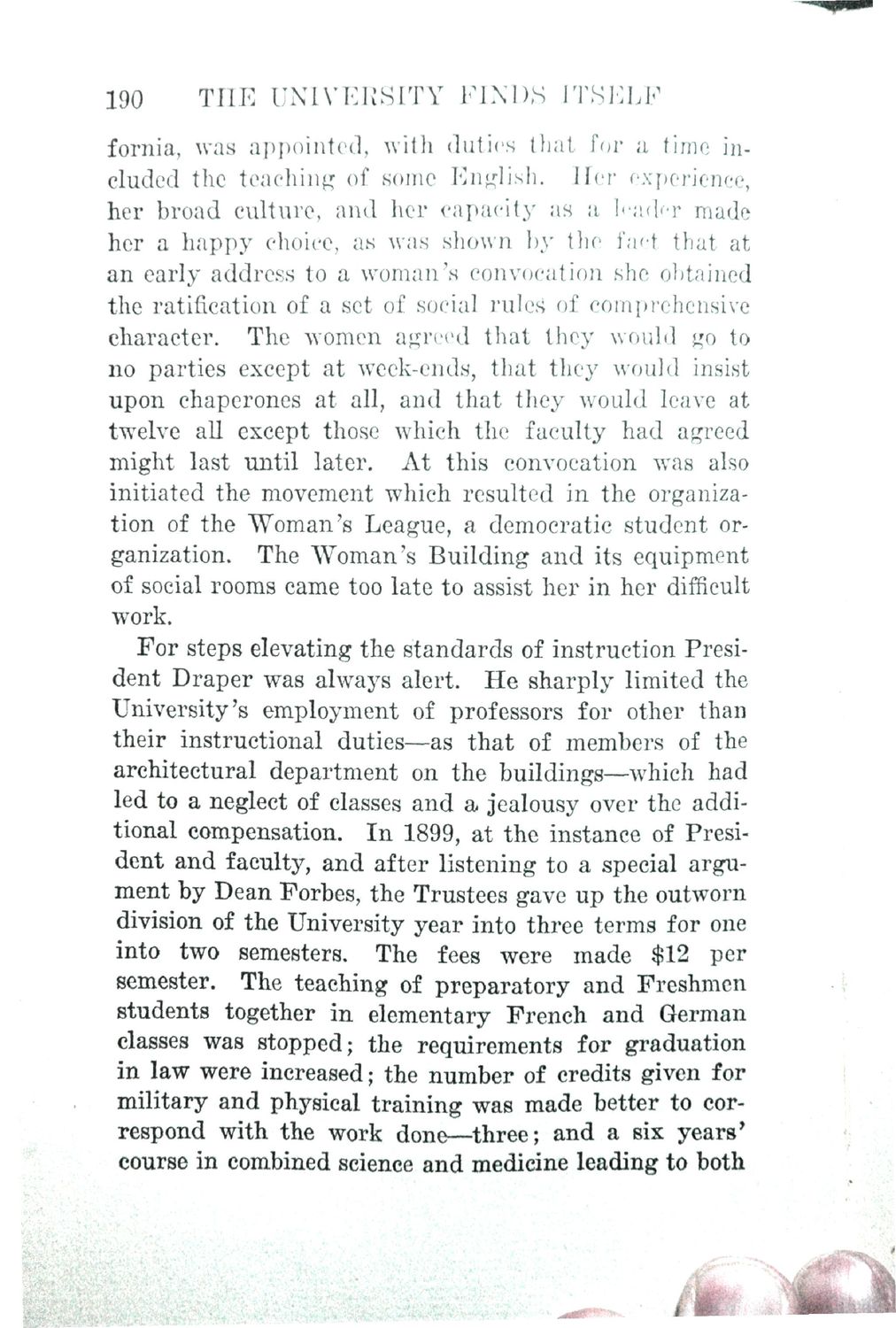| |
| |
Caption: Book - History of the University (Nevins)
This is a reduced-resolution page image for fast online browsing.

EXTRACTED TEXT FROM PAGE:
190 THE UNIVERSITY FINDS ITSELF fornia, was appointed, with duties that for a time included the teaching of some English. Her experience, her broad culture, and her capacity as a leader made her a happy choice, as was shown by the fact that at an early address to a woman's convocation she obtained the ratification of a set of social rules of comprehensive character. The women agreed that they would go to no parties except at week-ends, that they would insist upon chaperones at all, and that they would leave at twelve all except those which the faculty had agreed might last until later. At this convocation was also initiated the movement which resulted in the organization of the Woman's League, a democratic student organization. The Woman's Building and its equipment of social rooms came too late to assist her in her difficult work. For steps elevating the standards of instruction President Draper was always alert. He sharply limited the University's employment of professors for other than their instructional duties—as that of members of the architectural department on the buildings—which had led to a neglect of classes and a jealousy over the additional compensation. In 1899, at the instance of President and faculty, and after listening to a special argument by Dean Forbes, the Trustees gave up the outworn division of the University year into three terms for one into two semesters. The fees were made $12 per semesterjf| The teaching of preparatory and Freshmen students together in elementary French and German classes was stopped; the requirements for graduation in law were increased; the number of credits given for military and physical training was made better to correspond with the work done—three; and a six years' course in combined science and medicine leading to both
| |